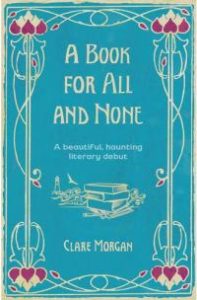 Half of a Yellow Sun has been on my TBR list for quite some time and seeing the shorts for the new film prompted me to pick it up, and I wish I’d done so sooner. It’s a true page-turning saga, taking in the broad sweep of Nigerian politics in the ‘60s through the lives of a handful of central characters. It reminded me of how little literature is readily known from Africa outside of South African writers like Nadine Gordimer, Doris Lessing and J M Coetzee.
Half of a Yellow Sun has been on my TBR list for quite some time and seeing the shorts for the new film prompted me to pick it up, and I wish I’d done so sooner. It’s a true page-turning saga, taking in the broad sweep of Nigerian politics in the ‘60s through the lives of a handful of central characters. It reminded me of how little literature is readily known from Africa outside of South African writers like Nadine Gordimer, Doris Lessing and J M Coetzee.
If ‘politics’ makes this book seem dry, it is anything but. It cleverly and brilliantly draws you into the story through the characters. The first of these we meet is Ugwu, a thirteen-year-old village boy who becomes the houseboy for a black African academic, Odenigbo, at a regional university. This introduces Ugwu to the wider world, as he serves drinks to the professor and his friends discussing the political situation and shouting about their socialist and separatist views into the balmy night – Lagos seems a very long way away.
We then see the story through the eyes of Olanna, the daughter of a wealthy middle-class Nigerian family (they are Igbo – a Christian tribe who later suffer massacres at the hands of the Muslim Hausas). Olanna has a tough, hard-headed twin sister, Kainene, who stays behind in Lagos helping out with their father’s business interests while Olanna takes up a junior teaching role in the university where Odenigbo works. She and Odenigbo soon become lovers and Olanna moves in with him – Ugwu, who is devoted to his ‘master’, can see that Olanna shares his feelings, and he accepts her as part of the household, which soon also includes an adopted baby daughter.
The third character whose point of view we share is Richard, an Anglo Brit who’s in Nigeria researching a book. Richard represents the sympathetic white man – he is interested in Igbo culture, and this interest makes him suspect in the eyes of expats and Nigerians alike. Richard gets involved with Kainene, and the dynamics of the novel are set up.
What happens then is a wonderfully effective, and affecting, portrayal of how the unthinkable impacts on the characters’ lives. The politics happen offstage and the characters carry on their lives not sure what will happen next, all cacooned, to some extent, in their relatively comfortable lives. Like all of us they don’t really believe the horror stories they hear until Olanna, on a visit home to Lagos, and hearing there is trouble, goes to check on her poorer relatives and sees the results of a massacre.
As the situation worsens, the south-east declares independence, and the state of Biafra is formed. This is what Odenigbo and his friends always wanted, and they are in high spirits, getting jobs in the new administration. However, things don’t go well, and these middle-class people have to give up their houses and retreat from the advancing Nigerian government forces – with each move they become more and more impecunious. Olanna and Ugwu try to retain a sense of normalcy, but even they are almost starving, although every now and then Olanna’s contacts means she gets some life-saving provisions (her wealthy parents spend the war sheltering in London).
Even Kainene, whose toughness and pragmatism should have protected her, finds she’s squeezed into a corner of Biafra that is holding out, and she ends up running a refugee camp. Of course, it is the poor village people who are the worst affected, making up the majority of tragic death toll from the Biafran famine.
This is such a wonderfully immersive drama – the characters, especially Ugwu, are beautifully drawn. The reader really does feel they are going on this journey with them, in all its sights, sounds and tastes. There are elements of horror but, essentially, the novel shows how tragedy creeps up as we are just trying to live our lives as best we can.








